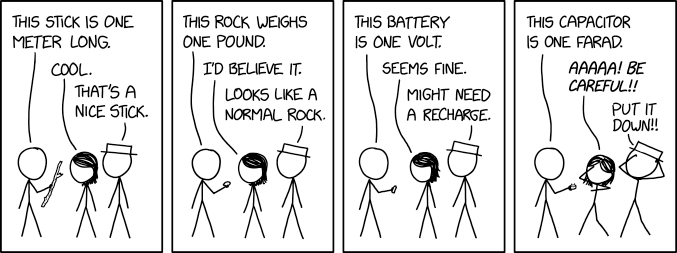this post was submitted on 25 Jun 2025
458 points (97.7% liked)
xkcd
11787 readers
15 users here now
A community for a webcomic of romance, sarcasm, math, and language.
founded 2 years ago
MODERATORS
you are viewing a single comment's thread
view the rest of the comments
view the rest of the comments

Depends on the voltage it's charged with, but household current would give it more energy than a shotgun has.
Realistically one would not do that unless you were dealing with something industrial. You would use them otherwise for things like dampening lower voltage systems that need a lot of current.
Closer to the danger level of someone holding two exposed wires plugged into the wall.
Household current pumped through a full bridge rectifier, that is.
Capacitors don't seem to do very much with AC Other than attenuate it a bit
AC units have beefy capacitors, right? Do you know in what range, for comparison?
Still tens to maybe low hundreds of microfarads.
Oh. I thought it would be more impressive, but that's still orders of magnitude away. Thanks!
And when they are used for air-conditioning units, they are typically boost capacitors, which means they store up a nice amount of juice for when the compressor powers on and needs a sudden rush of energy, but that's only a very small amount, like you couldn't crank a car with the amount of energy in these capacitors.
No. They provide phase shift to give the single-phase induction motors a rotating rather than oscillating magnetic field. They charge and discharge 100/120 times per second depending on grid frequency.
They do not cover inrush current, and would need to be orders of magnitude bigger and a different topology to do so.